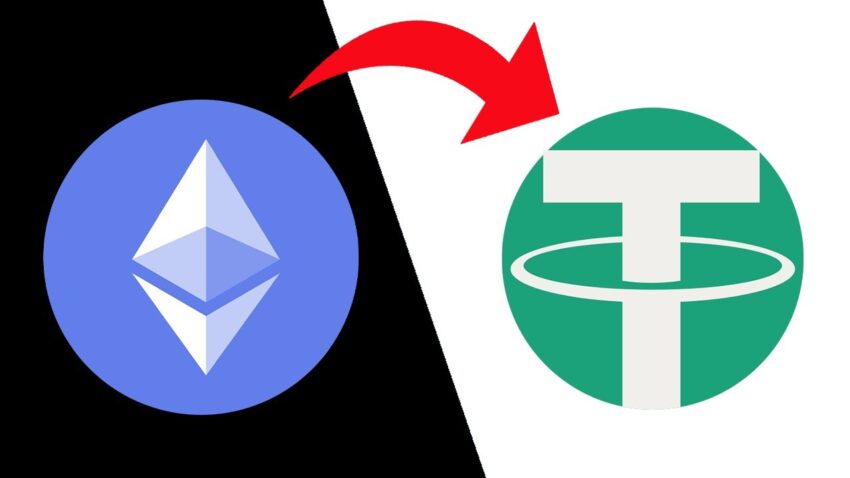Converting between the cryptocurrencies Ethereum (ETH) and Tether (USDT) can provide certain benefits for traders and investors. USDT is a stablecoin pegged to the US dollar, while ETH is more volatile. Understanding the potential upsides of converting ETH to USDT or USDT to ETH is key.
- Mitigate Volatility Risk
A major benefit of converting ETH to USDT is mitigating volatility risk. Due to its stablecoin nature, USDT value fluctuates very little compared to Ethereum. Converting ETH to USDT locks in gains and reduces exposure to downward swings. This provides stability and hedges against ETH price declines.
- Take Profits
When ETH prices surge, converting ETH to USDT allows traders to easily take profits. Exchanging the appreciated ETH for stablecoin USDT locks in gains from the ETH price increase. Traders can then re-enter an ETH position when prices are lower. Converting to USDT secures profits amid volatility.
- Temporary Store of Value
USDT serves as a temporary store of value when converting from more volatile cryptos. When traders want to get out of ETH but are not ready to cash out to fiat, swapping ETH to USDT preserves capital. The stable USDT value holds its peg, acting as a short-term store of value outside ETH.
- Use as Trading Pair
Exchanging ETH for USDT provides traders with greater flexibility in trading pairs. Once converted to USDT, traders can easily swap between other crypto assets paired with USDT. More trading options open up without having to first convert USDT to fiat. Converting ETH to USDT unlocks additional trading avenues.
- Easier to Transact
Due to Tether’s ubiquity and stable value, USDT transactions tend to be simpler relative to ETH. Vendors are more likely to accept USDT over ETH payments. Converting ETH to USDT can make commerce transactions easier when crypto is preferred over fiat. USDT is designed for transactions versus ETH for utility.
- Lower Fees
In some cases, converting ETH to USDT can reduce transaction fee costs. USDT runs on multiple blockchains, some of which have lower fees than transacting in ETH. Omni blockchain Tether transactions cost less than ETH gas fees, for example. Converting to USDT could provide fee savings in certain situations.
- Avoid ETH Gas Spikes
Swapping ETH for USDT allows bypassing high ETH gas fees when activity on the network spikes. During peak congestion, gas prices can get exorbitantly expensive. By converting ETH to USDT, these costs are avoided since USDT runs on other blockchains unaffected by ETH gas. Converting out of ETH skirts gas volatility.
- Gain Exposure to Altcoins
For traders wanting to diversify into alternative cryptocurrencies, converting ETH to USDT provides a common trading pair. Most altcoins are paired with USDT on exchanges. Switching ETH to USDT allows accessing new markets without going through USD first. Converting ETH to USDT opens the door to altcoin trading.
- Leverage Stablecoin Attributes
Beyond stability, USDT provides other attributes that ETH does not natively have. This includes easier integration for merchants, quicker settlement times, and pseudo-anonymity. Converting ETH to USDT leverages these other advantages inherent to stablecoin design. Accessing USDT properties can benefit use cases.
In summary, converting between the leading smart contract cryptocurrency ETH and the top stablecoin USDT can mitigate volatility, take profits, store temporary value, expand trading options, reduce fees, avoid gas spikes, facilitate access to altcoins, and leverage unique stablecoin attributes. Traders carefully weigh conditions to determine optimal times to convert USDT to ETH or ETH to USDT.
